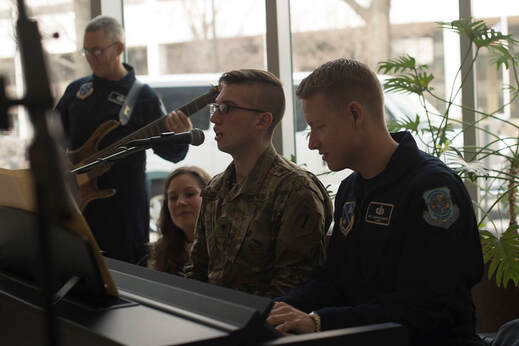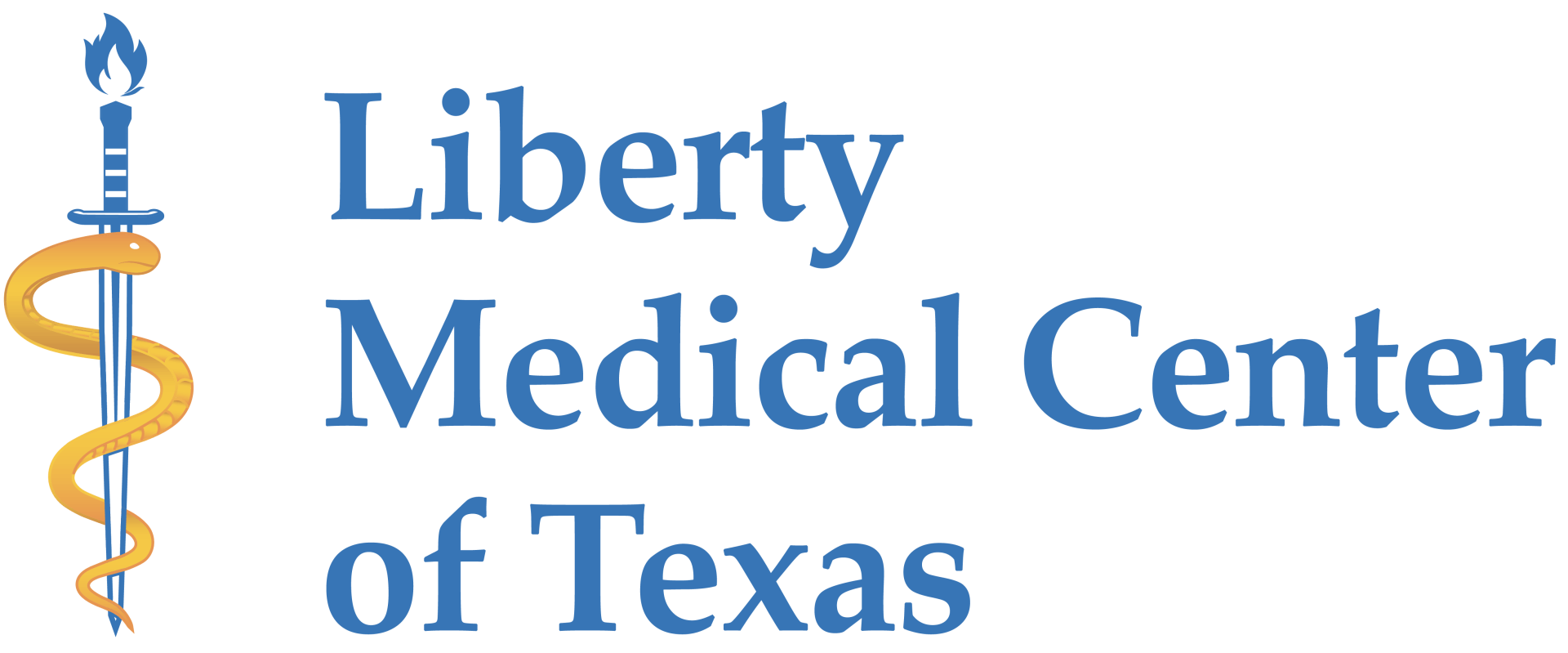How Music can Heal the Brain and Help PTSD Patients
By Vanessa Okoro
June 11, 2023
By Vanessa Okoro
June 11, 2023
 Music therapy impacts recovering service members by Joint Base Andrews Naval Air Facility, on Flickr
Music therapy impacts recovering service members by Joint Base Andrews Naval Air Facility, on Flickr
In the United States, the need for music therapy began after World War I. Musicians from the community, both professional and amateur, played music at the Veterans hospitals and the physical and emotional responses to music lead to nurses and doctors requesting musicians to be hired by hospitals. Music therapists determine what intervention is appropriate: singing, making music, listening to music, or moving to music. Music, when employed as a therapeutic tool via music therapy, may address and reduce prominent symptoms of post traumatic stress, including emotionally dysregulating intrusions, avoidance, negative alterations in mood, and arousal and high reactivity. Music therapy strengthens the client’s capabilities. It also allows people to express themselves nonverbally (AMTA, 2014).
What is Music Therapy?
According to the American Music Therapy Association (AMTA), “Music Therapy is the clinical and evidence-based use of music interventions to accomplish individualized goals within a therapeutic relationship by a credentialed professional who has completed an approved music therapy program” (2014a). It is a recognized health profession that uses a therapeutic relationship, along with music, to address the emotional, social, cognitive, and physical needs of patients. Music therapy has been employed as a therapeutic intervention to facilitate healing across a variety of clinical populations. There is theoretical and empirical evidence to suggest that individuals with trauma exposure and Post Traumatic Stress Disorder (PTSD), a condition characterized by enduring symptoms of distressing memory intrusions, avoidance, emotional disturbance, and hyperarousal, may derive benefits from music therapy.
Music: Healing for the Brain and PTSD
Music is a treasured tool because it can evoke changes in emotion and stimulate the brain (Koelsch, 2014; Moffic, 2008). There is evidence that music can induce changes in subjective feelings, automatic stimulation, hormone arousal, emotional motor expression (smiling), and action movements (clapping, foot tapping, singing, dancing, and playing an instrument) (Koelsch, 2014). Music used to promote neurogenesis and neuroplasticity could help people with PTSD heal faster and/or more easily. Activities include learning an instrument, drumming, or producing any musical sound. Encouraging music lessons (from a music teacher, YouTube, videos, or books) can be helpful. For people who may be unable to learn an instrument, there are musical applications that can be downloaded on tablets, smartphones, or computers that will allow people to make music by touching a button. Brain-imaging techniques show music activates networks in the brain. Through biomedical research, it has been demonstrated that “music is a highly structured auditory language involving complex perception, cognition, and motor control in the brain, and thus it can effectively be used to retrain and reeducate the injured brain” (Mclntosh & Thaut, 2010) The areas of the brain used in music are the same areas active when processing language, auditory perception, attention, memory, executive control and motor control (Mclntosh & Thaut, 2010). Music can be used to not only activate these areas, but it can also be used to develop “patterns of interaction” between them (Mclntosh & Thaut, 2010, p. 3). So whether it is listening, singing, playing an instrument, singing in a group, research has shown a great deal of positive impact of music to the brain. There’s something so special, beautiful and uplifting about listening to music or being around an atmosphere of good music. It lightens up the mood, it sets your mind and soul ready to release stress, worry and anxiety.
What is Music Therapy?
According to the American Music Therapy Association (AMTA), “Music Therapy is the clinical and evidence-based use of music interventions to accomplish individualized goals within a therapeutic relationship by a credentialed professional who has completed an approved music therapy program” (2014a). It is a recognized health profession that uses a therapeutic relationship, along with music, to address the emotional, social, cognitive, and physical needs of patients. Music therapy has been employed as a therapeutic intervention to facilitate healing across a variety of clinical populations. There is theoretical and empirical evidence to suggest that individuals with trauma exposure and Post Traumatic Stress Disorder (PTSD), a condition characterized by enduring symptoms of distressing memory intrusions, avoidance, emotional disturbance, and hyperarousal, may derive benefits from music therapy.
Music: Healing for the Brain and PTSD
Music is a treasured tool because it can evoke changes in emotion and stimulate the brain (Koelsch, 2014; Moffic, 2008). There is evidence that music can induce changes in subjective feelings, automatic stimulation, hormone arousal, emotional motor expression (smiling), and action movements (clapping, foot tapping, singing, dancing, and playing an instrument) (Koelsch, 2014). Music used to promote neurogenesis and neuroplasticity could help people with PTSD heal faster and/or more easily. Activities include learning an instrument, drumming, or producing any musical sound. Encouraging music lessons (from a music teacher, YouTube, videos, or books) can be helpful. For people who may be unable to learn an instrument, there are musical applications that can be downloaded on tablets, smartphones, or computers that will allow people to make music by touching a button. Brain-imaging techniques show music activates networks in the brain. Through biomedical research, it has been demonstrated that “music is a highly structured auditory language involving complex perception, cognition, and motor control in the brain, and thus it can effectively be used to retrain and reeducate the injured brain” (Mclntosh & Thaut, 2010) The areas of the brain used in music are the same areas active when processing language, auditory perception, attention, memory, executive control and motor control (Mclntosh & Thaut, 2010). Music can be used to not only activate these areas, but it can also be used to develop “patterns of interaction” between them (Mclntosh & Thaut, 2010, p. 3). So whether it is listening, singing, playing an instrument, singing in a group, research has shown a great deal of positive impact of music to the brain. There’s something so special, beautiful and uplifting about listening to music or being around an atmosphere of good music. It lightens up the mood, it sets your mind and soul ready to release stress, worry and anxiety.
“Music therapy can make the difference between withdrawal and awareness, between isolation and interaction, between chronic pain and comfort -- between demoralization and dignity."
- Barbara Crowe, Past President of National Association for Music Therapy
The various forms of music participation can help with symptoms of PTSD. One of such symptoms is avoidance; avoiding people, places or environments that can act as triggers. Hence, participating in music as a group prompts communication, collaboration, sharing a goal, and social cohesion (Koelsch, 2014). Attachment-related emotions due to musical socialization can be used for people who have PTSD to address the negative changes in thoughts and moods (isolation, feelings of detachment, and being unable to experience positive emotions) (APA, 2013; Koelsch, 2014). Music can be used to trigger social functioning, which fulfills a basic human need, one that people with PTSD often feel like they are missing.
It is concluded that music therapy may be a useful therapeutic tool to reduce symptoms and improve functioning among individuals with trauma exposure and PTSD. In addition, music therapy may help foster resilience and engage individuals who struggle with stigma associated with seeking professional help. Patients are guided by a trained therapist as they listen to music; verbally process it; or actively participate through songwriting, improvisation, remake of a song, or musical performance—all of which involve engaging the creative process. The goal of music therapy is to improve both the physical and mental well-being of patients who have serious illnesses and are receiving associated treatments.
It is concluded that music therapy may be a useful therapeutic tool to reduce symptoms and improve functioning among individuals with trauma exposure and PTSD. In addition, music therapy may help foster resilience and engage individuals who struggle with stigma associated with seeking professional help. Patients are guided by a trained therapist as they listen to music; verbally process it; or actively participate through songwriting, improvisation, remake of a song, or musical performance—all of which involve engaging the creative process. The goal of music therapy is to improve both the physical and mental well-being of patients who have serious illnesses and are receiving associated treatments.
Liberty Medical Center of Texas is one of several organizations dedicated to providing programs for mental health, trauma, PTSD, addiction, and depression for our veterans.
Related Posts:
Identifying PTSD in a Loved One
Who Is A Veteran?
Telehealth - Improving Access to Mental Health Care
Identifying PTSD in a Loved One
Who Is A Veteran?
Telehealth - Improving Access to Mental Health Care
References:
By Karen Popkin, LCAT, MT-BC, and Jyothirmai Gubili, MS Music Therapy: Relevance in Oncology July 25, 2017 https://ascopost.com/issues/july-25-2017/music-therapy-relevance-in-oncology/
Landis-Shack N, Heinz AJ, Bonn-Miller MO. Music Therapy for Posttraumatic Stress in Adults: A Theoretical Review. Psychomusicology. 2017;27(4):334-342. doi: 10.1037/pmu0000192. PMID: 29290641; PMCID: PMC5744879.
Sorensen, Maria. (2015). The Neurology of Music for Post-Traumatic-Stress Disorder Treatment: A Theoretical Approach for Social Work Implications. Retrieved from Sophia, the St. Catherine University repository website: https://sophia.stkate.edu/msw_papers/528
American Music Therapy Association. (2014b). History of music therapy. Retrieved from http://www.musictherapy.org/about/history/
Mclntosh, G. & Thaut, M. (2010). How music helps to heal the injured brain: Therapeutic use crescendos thanks to advances in brain science. The Dana Foundation. Retrieved from: http://www.dana.org/Cerebrum/Default.aspx?id=39437
Koelsch, S. (2014). Brain correlates of music-evoked emotions. Nature Reviews Neuroscience, 15(3). doi:10.1038/nrn3666.
By Karen Popkin, LCAT, MT-BC, and Jyothirmai Gubili, MS Music Therapy: Relevance in Oncology July 25, 2017 https://ascopost.com/issues/july-25-2017/music-therapy-relevance-in-oncology/
Landis-Shack N, Heinz AJ, Bonn-Miller MO. Music Therapy for Posttraumatic Stress in Adults: A Theoretical Review. Psychomusicology. 2017;27(4):334-342. doi: 10.1037/pmu0000192. PMID: 29290641; PMCID: PMC5744879.
Sorensen, Maria. (2015). The Neurology of Music for Post-Traumatic-Stress Disorder Treatment: A Theoretical Approach for Social Work Implications. Retrieved from Sophia, the St. Catherine University repository website: https://sophia.stkate.edu/msw_papers/528
American Music Therapy Association. (2014b). History of music therapy. Retrieved from http://www.musictherapy.org/about/history/
Mclntosh, G. & Thaut, M. (2010). How music helps to heal the injured brain: Therapeutic use crescendos thanks to advances in brain science. The Dana Foundation. Retrieved from: http://www.dana.org/Cerebrum/Default.aspx?id=39437
Koelsch, S. (2014). Brain correlates of music-evoked emotions. Nature Reviews Neuroscience, 15(3). doi:10.1038/nrn3666.

